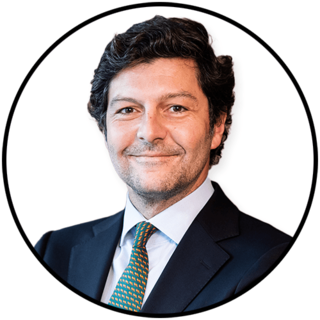Outlook for the second half of 2025: what can we expect?
André Themudo | BlackRock
Develops relationships with Spanish, Portuguese and Andorra asset managers, private and retail banks, family offices and distribution platforms. This includes the distribution of Mutual Funds, Indexing Strategies and Investment Solutions for wealth clients.
June 2025 by André Themudo
As we move into the second half of 2025, the global economic landscape is transforming at an even faster pace. Structural forces that have long shaped the economy, from the geopolitical fragmentation to the evolution of the economy at a global level, are now colliding with abrupt changes in US policy. The introduction of across-the-board tariffs, particularly on Chinese imports, marks an abrupt acceleration of this process, potentially raising effective U.S. tariffs to their highest levels since the 1930s.
Despite this disruption, the macroeconomic limitations remain unshakeable. These "binding economic rules" continue to serve as an anchor for markets, mitigating the impact of political shocks and sustaining a risk-friendly stance. For investors, the gradual blurring of the line between short-term and long-term dynamics raises fundamental questions: what is the best way to position yourself in a world where cyclical signals and structural changes converge? How can portfolios capitalize on this transformation, rather than simply react?
Structural economic rules
Recent changes in US trade policy are now met with structural limitations of the economy, particularly with regard to debt financing and the resilience of supply chains. This analysis focuses on these macroeconomic fundamentals, rather than on specific policy changes.
A clear example: global production chains cannot be reconfigured quickly without causing significant disruption. The most recent trade measures in the U.S. highlight this limitation. According to U.S. census data, China remains a key supplier of critical minerals, semiconductors, industrial components, and automotive parts. The imposition of tariffs can, therefore, increase costs, hinder access to strategic raw materials, and interrupt production lines. These constraints help explain why we anticipate a stabilization of U.S. policy over a tactical horizon of six to 12 months, even in a context of short-term volatility. Therefore, we maintain a constructive view on developed market stocks.
Critical investment issues
This context challenges traditional investment models and raises strategic questions for global markets. One of the most important is: what will be the future role of U.S. Treasury bonds in portfolios?
Historically used as a hedge in times of risk aversion, U.S. long-term bonds have proven less effective in this role.
At the same time, the dollar depreciated against major currencies during the correction in risk assets in April — unusual behavior by historical standards. In our opinion, the dollar's status as a safe haven asset is being reassessed. On the other hand, gold has reached all-time highs, reflecting the demand for defensive alternatives, and therefore, we expect it to play a more important role as a risk diversifier in portfolios.
Other strategic issues are also in focus: what is the best way to invest in a rapidly changing market? What is the best way to take advantage of the ongoing structural transformation? Will there be a reinforced preference for domestic markets? And does it still make sense to allocate capital for longer horizons?
The current concentration of the stock market, largely driven by artificial intelligence, brings opportunities — but also risks. We consider that this scenario requires a more selective and deliberate risk management. We believe that the ability to take advantage of structural changes in transition phases can generate relevant incremental returns.
In this context, we see value in a more specific approach, with a sector focus. The ongoing global transformation is generating growing demand for private capital, but maintaining interest rates above pre-pandemic levels could pose an additional challenge to future returns in this segment.
We consider it essential to adopt a more selective, specific, and guided investment approach to structural megatrends. The ability to anticipate and adapt strategies to transformation cycles will be crucial to generating value. The second half of 2025 will require tactical agility, analytical rigor, and a clear understanding of the profound forces that are redefining the global economy.


